Geoff Brown, Stable Population Party candidate fights to conserve woodlands - Seat of Lindsay, NSW
 Labor MP David Bradbury must correct error riddled conservation funding announcement (NSW), says Geoff Brown, Stable Population Party candidate. Mr Brown, who is a New South Wales natural conservation activist, has long fought to retain Cumberland plain woodland against attempts by governments to allow it to be destroyed for massive suburban developments. He believes now that the ALP has tried to take credit for his concept of the Cumberland Conservation Corridor. Geoff is running as a candidate for the Stable Population Party.
Labor MP David Bradbury must correct error riddled conservation funding announcement (NSW), says Geoff Brown, Stable Population Party candidate. Mr Brown, who is a New South Wales natural conservation activist, has long fought to retain Cumberland plain woodland against attempts by governments to allow it to be destroyed for massive suburban developments. He believes now that the ALP has tried to take credit for his concept of the Cumberland Conservation Corridor. Geoff is running as a candidate for the Stable Population Party.
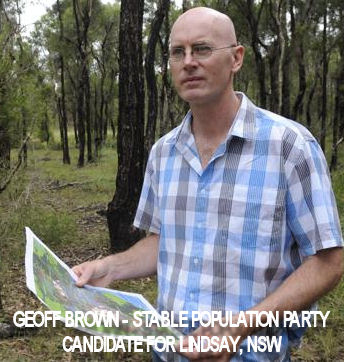 Mark Butler, the Federal Environment Minister, and David Bradbury, Labor member for Lindsay and the Assistant Treasurer, have been called on by Geoff Brown, the Stable Population Party candidate for Lindsay, to set the voters of Lindsay straight, after Lindsay's leading local newspaper, the Penrith Press, printed a half page story riddled with errors and misinformation about Labors 2010 federal election commitment of $7.5 million towards the establishment of the Cumberland Conservation Corridor.
Mark Butler, the Federal Environment Minister, and David Bradbury, Labor member for Lindsay and the Assistant Treasurer, have been called on by Geoff Brown, the Stable Population Party candidate for Lindsay, to set the voters of Lindsay straight, after Lindsay's leading local newspaper, the Penrith Press, printed a half page story riddled with errors and misinformation about Labors 2010 federal election commitment of $7.5 million towards the establishment of the Cumberland Conservation Corridor.
Geoff Brown, also the President of the Western Sydney Conservation Alliance, developed the concept for the Cumberland Conservation Corridor in 2005, and at the 2010 election ran as an Independent using preference negotiations with Labor and Liberal to extract the $7.5 million deal from Labor. So he is on top of this issue. Several articles published by candobetter.net show his record on this matter. See Cumberland plain woodland and Geoff Brown.
Brown described himself as "livid" when he read the Penrith Press article which erroneously stated that Labor had announced $7.5m towards establishing the Cumberland Conservation Corridor. He said the article made it look as if Labor had just made some new 2013 committment. He said the voters of Linsay would be confused.
"The story should have been about why it took 3 years to fulfill their 2010 commitment. The article was littered with errors based on the dubious media release put out by David Bradbury and Mark Butler. If not corrected it will let Labor off the hook in Lindsay from announcing any new local conservation funding outcomes for the 2013 election. Labor may try to fudge their way out of it”.
Geoff Brown called on David Bradbury and Mark Butler to front the voters of Lindsay and tell them:
" - That neither Labor nor Liberals have yet promised any new conservation money in Lindsay for the 2013 election
- The announcement cited by the Penrith Press was from the 2010 election and it took 3 years to cobble together an outcome
- The Mulgoa biobanking site stays in private ownership so will not become part of the publicly owned Mulgoa Nature Reserve. So no net public benefit or use for education
- The Mulgoa site was never at threat of development and was already protected under Penrith Councils LEP which zones it E2 Environmental Conservation (I argued that money be better spent trying to conserve bushland in Penriths north at risk of development)
- That nearly half of the $7.5 million was spent on land care projects that are outside the Lindsay electorate and nowhere near the proposed Cumberland Conservation Corridor. Projects such as those in the Blue Mountains and the Cranebrook wetland project are not anywhere near the CCC
- That $3.4 million funding for weed removal and the planting trees is exactly what Tony Abbott proposes with his Green Army and Direct Action policy. This outcome condones the Liberals policy
- That 2000 ha of local bush land has not been protected (David’s MR and his letterbox propaganda claims he has saved 2000 ha of local bush land. He is claiming to have protected the 558 ha Airservices Australia land at Shanes Park and 1300 ha of bush at the Orchard Hillls Defence Establishment. These sites are not formally protected. Shanes Park has the proposed Castlereagh Freeway running through it)
- That biobanking is a scheme whereby there is a net loss of habitat. Bushland gets bulldozed with developers offsetting that clearing by funding the management of bushland elsewhere. In this case the State funding came from the clearing of critically endangered bushland in the Sydney Growth Centres. It is a highly dubious method of conserving nature.
- That the land owner is not raising his income from selling the biobanking credits. He gets a guaranteed $6.6 million as the joint Federal and State funding has already purchased the credits."
Labor caught out moving the fence posts
Geoff Brown added that Labor has been caught out trying to change the location of the Cumberland Conservation Corridor. As an example he cited the wetlands at Cranebrook near the Waterside housing estate as being 'nowhere near' the CCC.”
Mr Brown says that Lindsay voters need to be aware that Labor has not yet committed any new money towards conserving bushland within the Cumberland Conservation Corridor.
Mr Brown met last week with Mark Butler and David Bradbury calling on them to fund the protection of 1500 ha of Priority Conservation Land north of the ADI Site that is threatened. He says that the 50 ha of Mulgoa land was already zoned for protection but this 1500 ha of bushland has no such conservation zoning.
In his opinion, the only way it will be zoned for conservation by Penrith Council is if there is money on the table to buy it.
"The voters of Lindsay need to join with the Stable Population Party in calling on Labor and Liberal to commit to protecting this land.”
A better, not a bigger Australia
Mr Brown concluded by saying that to his knowledge, the Stable Population Party is the only minor political party in Lindsay actively lobbying Labor and Liberal about protecting the environment and limiting more urban sprawl and traffic congestion. He said that voters could rest assured that the Stable Population Party stands for a better not a bigger Australia.

 A New South Wales lawyer, Philip Howell, has written a brilliant new democratic strategy to decide from the local level upwards, how big we the people want Australia's population to be. As a population sociologist who compares international systems on this matter, I am really impressed and can only encourage everyone to support this man's remarkable contribution to our democracy and wellbeing. Look at his site for more detail on reforming our constitution.
A New South Wales lawyer, Philip Howell, has written a brilliant new democratic strategy to decide from the local level upwards, how big we the people want Australia's population to be. As a population sociologist who compares international systems on this matter, I am really impressed and can only encourage everyone to support this man's remarkable contribution to our democracy and wellbeing. Look at his site for more detail on reforming our constitution.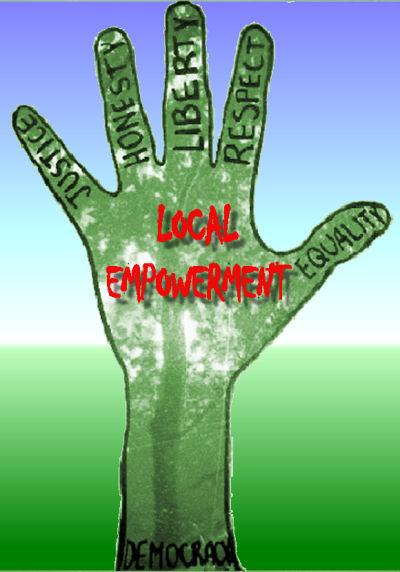 The original site, along with the reasons for the proposal is to be found here:
The original site, along with the reasons for the proposal is to be found here:  Thoughts on David Suzuki’s observation that Canada is FULL. Now is the opportune moment to say that on this issue, Dr. David Suzuki is right.
Thoughts on David Suzuki’s observation that Canada is FULL. Now is the opportune moment to say that on this issue, Dr. David Suzuki is right.

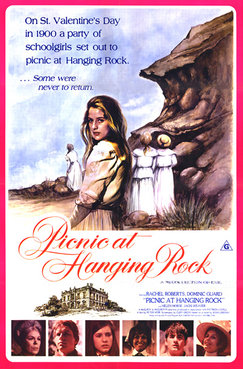


 There is an Orwellian new Bill on the brink of being passed in Victoria's Parliament. (Debate 27 June) The Bill justifies reducing public rights to consultation and objection by narrowing the scope of consultation, by reducing the scope of information given to the public in respect of revocation of reserves of public land and compulsory acquisition of land, public and private. It allows enormous discretion on the part of the Minister with regard to what information and consultation he allows, even with local government bodies. The really Orwellian part of the Bill is the circular justification of these reductions in citizens' civil rights on so-called grounds of 'efficiency' and 'time saving'. In this case 'cutting red tape' means 'cutting out democracy'.
There is an Orwellian new Bill on the brink of being passed in Victoria's Parliament. (Debate 27 June) The Bill justifies reducing public rights to consultation and objection by narrowing the scope of consultation, by reducing the scope of information given to the public in respect of revocation of reserves of public land and compulsory acquisition of land, public and private. It allows enormous discretion on the part of the Minister with regard to what information and consultation he allows, even with local government bodies. The really Orwellian part of the Bill is the circular justification of these reductions in citizens' civil rights on so-called grounds of 'efficiency' and 'time saving'. In this case 'cutting red tape' means 'cutting out democracy'. This new Major Transport Projects Facilitation Amendment (East West Link and Other Projects) Bill 2013 is to be debated on 27 June in the Legislative Assembly. The Bill, by its very name, shows that it has been drafted to push through a particular hated series of private toll-roads that will horribly scar our green landscape and drastically reduce habitat for native animals. We refer to the East-West Link, which Kelvin Thomson has described as
This new Major Transport Projects Facilitation Amendment (East West Link and Other Projects) Bill 2013 is to be debated on 27 June in the Legislative Assembly. The Bill, by its very name, shows that it has been drafted to push through a particular hated series of private toll-roads that will horribly scar our green landscape and drastically reduce habitat for native animals. We refer to the East-West Link, which Kelvin Thomson has described as 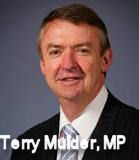 Mr MULDER (Minister for Public Transport) tabled following statement in
Mr MULDER (Minister for Public Transport) tabled following statement in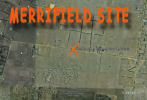 The recent announcement of yet another new suburb on the outskirts of Melbourne is nothing to celebrate despite its upbeat name of ‘Merrifield’, according to the Victorian and Tasmanian branch of Sustainable Population Australia.
The recent announcement of yet another new suburb on the outskirts of Melbourne is nothing to celebrate despite its upbeat name of ‘Merrifield’, according to the Victorian and Tasmanian branch of Sustainable Population Australia.
 Queensland clearing laws could kill over 400 million native animalsl The Commonwealth must act to stop the destruction.
Queensland clearing laws could kill over 400 million native animalsl The Commonwealth must act to stop the destruction.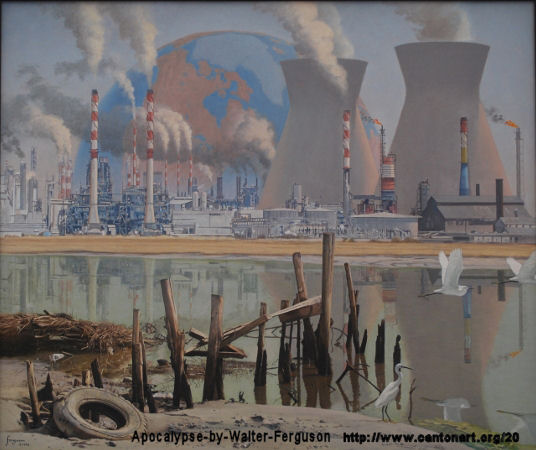 More about the upcoming 2013 environmental exhibition containing this painting, at end of this article under "Notes".
More about the upcoming 2013 environmental exhibition containing this painting, at end of this article under "Notes". A rally was held today on the steps of Parliament House in Melbourne " to protest against new laws proposed by the Napthine government which are undeniably bad news for forests.
A rally was held today on the steps of Parliament House in Melbourne " to protest against new laws proposed by the Napthine government which are undeniably bad news for forests.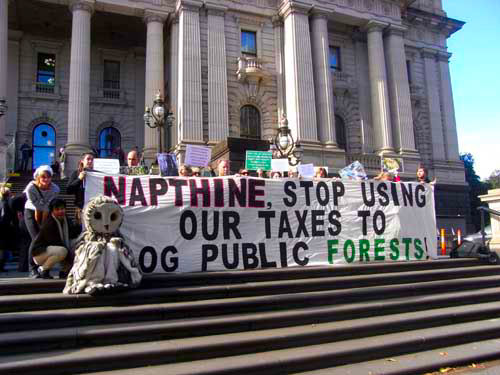

 What would Dr Nugget Coombs think of our treatment of the environment and the economy today? Quark applies a retrospectoscope to the problem as she reports on a 1970 Boyer Lecture on environment and economy.
What would Dr Nugget Coombs think of our treatment of the environment and the economy today? Quark applies a retrospectoscope to the problem as she reports on a 1970 Boyer Lecture on environment and economy.

 Today Australia reaches a population of 23 million. If we assess this against the status of our life-support systems, we should be alarmed. Neither Australia nor Earth is ecologically sustainable as shown by our national state of the environment reporting and the estimate that humans are consuming 150% of Earth’s renewable capacity. Population size is one of the underlying drivers of these trends. Should they continue, the implications for future generations are clear.
Today Australia reaches a population of 23 million. If we assess this against the status of our life-support systems, we should be alarmed. Neither Australia nor Earth is ecologically sustainable as shown by our national state of the environment reporting and the estimate that humans are consuming 150% of Earth’s renewable capacity. Population size is one of the underlying drivers of these trends. Should they continue, the implications for future generations are clear. Way back in 1994, The Australian Academy of Science said “In our view, the quality of all aspects of our children’s lives will be maximised if the population of Australia by the mid 21st Century is kept to the low, stable end of the achievable range, i.e. to approximately 23 million” and “If our population reaches the high end of the feasible range (37 million), the quality of life of all Australians will be lowered by the degradation of water, soil, energy and biological resources.”
Way back in 1994, The Australian Academy of Science said “In our view, the quality of all aspects of our children’s lives will be maximised if the population of Australia by the mid 21st Century is kept to the low, stable end of the achievable range, i.e. to approximately 23 million” and “If our population reaches the high end of the feasible range (37 million), the quality of life of all Australians will be lowered by the degradation of water, soil, energy and biological resources.”  Max Planck's adage should therefore be amended to read that "A new scientific truth does not triumph by convincing its opponents and making them see the light, but rather because its opponents eventually die and a new generation grows up that is familiar with it --- and by being adequately funded and promoted by people who incarnate Dale Carnegie's formula for success."
Max Planck's adage should therefore be amended to read that "A new scientific truth does not triumph by convincing its opponents and making them see the light, but rather because its opponents eventually die and a new generation grows up that is familiar with it --- and by being adequately funded and promoted by people who incarnate Dale Carnegie's formula for success."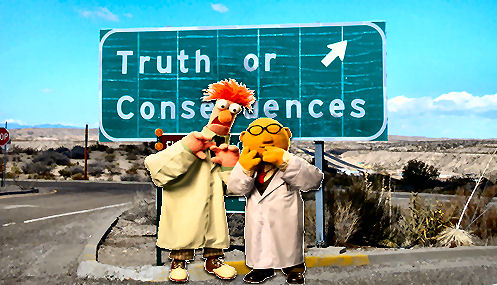
 "Allowing fools and eco-criminals to run our State governments is like the blind running with an axe." Adapted from anonymous comment with thanks.
"Allowing fools and eco-criminals to run our State governments is like the blind running with an axe." Adapted from anonymous comment with thanks. THE Queensland State Government plans to reopen logging in two million hectares of environmentally sensitive land put aside by the previous government, including in Central Queensland.
THE Queensland State Government plans to reopen logging in two million hectares of environmentally sensitive land put aside by the previous government, including in Central Queensland.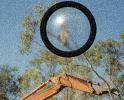 Tony Burke had no legal obligation to even consider the threatened koalas in Leard forest for the Maules Creek and Boggabri approval. New loopholes could see developers and miners determining if koalas are under threat.
Tony Burke had no legal obligation to even consider the threatened koalas in Leard forest for the Maules Creek and Boggabri approval. New loopholes could see developers and miners determining if koalas are under threat.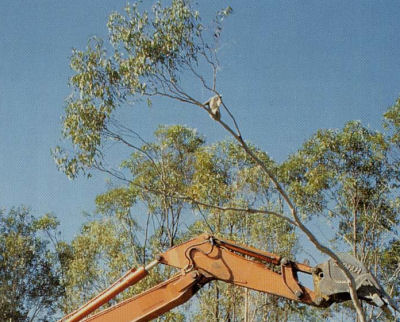 Federal documents obtained by the
Federal documents obtained by the 
 The new science of ecology will now describe animals as they really are---moral agents, not biological automatons. And as such, they are to be charged with a moral responsibility to constrain their cravings and live simply so that other animals like them can simply live. Or as they now say on St. Monbiot Island, “Be the reindeer you want the world to be.”
The new science of ecology will now describe animals as they really are---moral agents, not biological automatons. And as such, they are to be charged with a moral responsibility to constrain their cravings and live simply so that other animals like them can simply live. Or as they now say on St. Monbiot Island, “Be the reindeer you want the world to be.”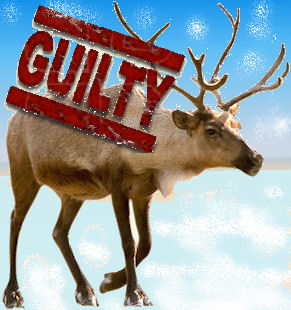

 David Attenborough and other renowned conservation figures have urged PM Gillard to retain National Environment Powers. At the moment changes devolving major decision making to our growth-mad developer states are imminent. The writers of a letter to the Primeminister say that their concern arises particularly due to Australia being "one of a very few biologically mega-diverse developed countries on the face of this Earth. The array of natural ecosystems and their component species is simply breathtaking, making Australia one of the most important and exciting places in the world for the long-term conservation of biological diversity."
David Attenborough and other renowned conservation figures have urged PM Gillard to retain National Environment Powers. At the moment changes devolving major decision making to our growth-mad developer states are imminent. The writers of a letter to the Primeminister say that their concern arises particularly due to Australia being "one of a very few biologically mega-diverse developed countries on the face of this Earth. The array of natural ecosystems and their component species is simply breathtaking, making Australia one of the most important and exciting places in the world for the long-term conservation of biological diversity." 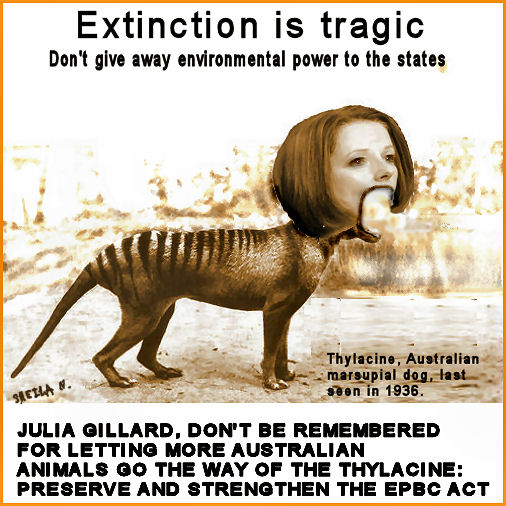
 Kelvin Thomson, MP for Wills, has written to Prime Minister Gillard, asking her to consider and respond to the concerns of constituents about planned changes to the federal environment act. Have any other ministers done this? We would like to hear from them if so.
Kelvin Thomson, MP for Wills, has written to Prime Minister Gillard, asking her to consider and respond to the concerns of constituents about planned changes to the federal environment act. Have any other ministers done this? We would like to hear from them if so. 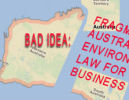 This Friday, 7 December, the Federal Government plans to give away environmental assessment authority to the states. Candobetter readers should take any opportunity they can to avoid this devolution of our already semi-toothless legislation. Here is an opportunity to add your signature to a petition. There is also a Get-up campaign. Readers are invited to let us know of any other actions they are taking.Links to petitions etc inside.
This Friday, 7 December, the Federal Government plans to give away environmental assessment authority to the states. Candobetter readers should take any opportunity they can to avoid this devolution of our already semi-toothless legislation. Here is an opportunity to add your signature to a petition. There is also a Get-up campaign. Readers are invited to let us know of any other actions they are taking.Links to petitions etc inside.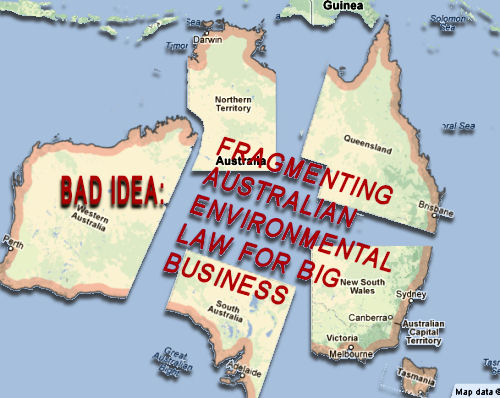

 A left-wing environmentalist group opposed to all forms of racism and xenophobia has been able to get a national immigration referendum on the ballot in Switzerland.
A left-wing environmentalist group opposed to all forms of racism and xenophobia has been able to get a national immigration referendum on the ballot in Switzerland.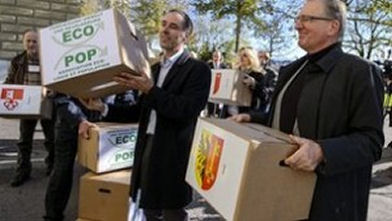
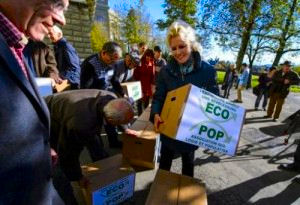
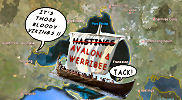 On November 6, 2012 it was reported that the Victorian government was cooling on the idea of another port for Hastings and instead its planners were casting their collective beady eye in the direction of Werribee. ("
On November 6, 2012 it was reported that the Victorian government was cooling on the idea of another port for Hastings and instead its planners were casting their collective beady eye in the direction of Werribee. ("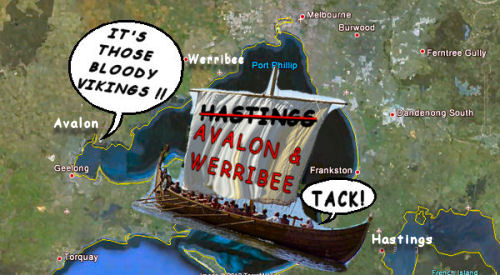
 The contest is international. This year it will focus on the human-ocean connection. The Marine Photobank is seeking images depicting human impacts on the ocean, its inhabitants and its resources, both restorative and destructive. First prize is a voyage for two aboard the National Geographic Endeavor to the Galapagos Islands with Lindblad Expeditions. There is also a second and third prize.
The contest is international. This year it will focus on the human-ocean connection. The Marine Photobank is seeking images depicting human impacts on the ocean, its inhabitants and its resources, both restorative and destructive. First prize is a voyage for two aboard the National Geographic Endeavor to the Galapagos Islands with Lindblad Expeditions. There is also a second and third prize.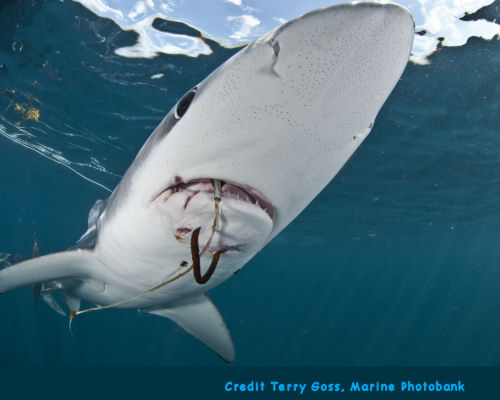 This awfully unsettling photograph by Terri Goss of a shark with a permanent hook in situ was the winner of last year's competition.
This awfully unsettling photograph by Terri Goss of a shark with a permanent hook in situ was the winner of last year's competition. The disingenuous who cannot refute your arguments often resort to sleight-of-hand alterations in terminology to make their case. Conflations are their stock in trade..... Lets not let our opponents get away with it.
The disingenuous who cannot refute your arguments often resort to sleight-of-hand alterations in terminology to make their case. Conflations are their stock in trade..... Lets not let our opponents get away with it. This delightful cartoon, by Marco Marilungo Pictor, depicts a conflated Pinocchio, apparently overwhelmed by his own complexity, under the somewhat calculating regard of his inventor, which so seemed to suit this topic that I purchased it from
This delightful cartoon, by Marco Marilungo Pictor, depicts a conflated Pinocchio, apparently overwhelmed by his own complexity, under the somewhat calculating regard of his inventor, which so seemed to suit this topic that I purchased it from Bill McKibben has recently unveiled some new "terrifying math" about global warming. But there are other numbers that terrify me more. My mother used to tell me to stop worrying, because it is not the things we worry about that usually get us, but the things we don't see coming. I think she was right.
Bill McKibben has recently unveiled some new "terrifying math" about global warming. But there are other numbers that terrify me more. My mother used to tell me to stop worrying, because it is not the things we worry about that usually get us, but the things we don't see coming. I think she was right.  Bill McKibben recently wrote about the “terrifying math” of global warming:
Bill McKibben recently wrote about the “terrifying math” of global warming:
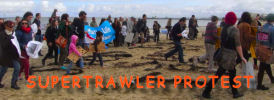 On Saturday 11 August I attended the "Stop the Supertanker Protest National Day of Action" at St Kilda Beach in Melbourne Victoria. There was a large group of mostly young people, well prepared with signs and activities designed to convey their message visually.
On Saturday 11 August I attended the "Stop the Supertanker Protest National Day of Action" at St Kilda Beach in Melbourne Victoria. There was a large group of mostly young people, well prepared with signs and activities designed to convey their message visually.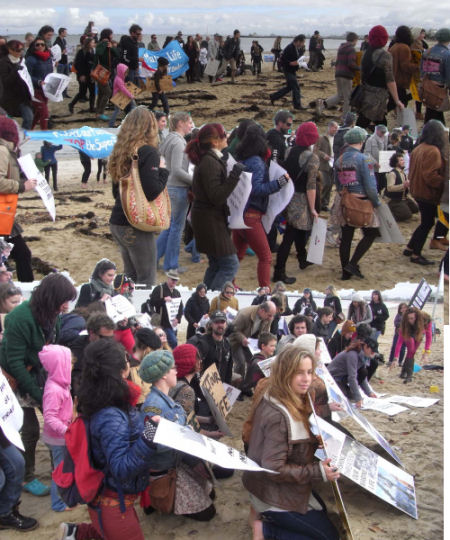
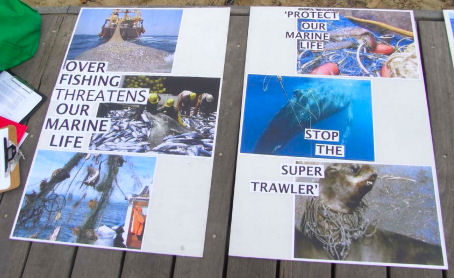
 PROTEST TODAY (Now!) 11 AM St Kilda Beach, behind Luna Park. See:
PROTEST TODAY (Now!) 11 AM St Kilda Beach, behind Luna Park. See: 

 It is a Canada where the unimaginable becomes real and the impossible becomes possible. They’re here! They’re here I tell you! Why can’t you see the Digital Generation has been stolen and replaced by replicas who look like real Canadians but are in fact programmed to follow an anti-Canadian agenda?
It is a Canada where the unimaginable becomes real and the impossible becomes possible. They’re here! They’re here I tell you! Why can’t you see the Digital Generation has been stolen and replaced by replicas who look like real Canadians but are in fact programmed to follow an anti-Canadian agenda? 
 The Rio+20 global environment conference in June aimed to set the environment agenda for the next 20 years. The consensus was that Rio delivered virtually nothing. The pre-agreed outcome document ‘The Future We Want’ is a 49-page wish list of clichés and aspirations, but it does not address or respond to the fundamental issues needing action at all. It failed completely to acknowledge the central importance of unsustainable population growth on a planet of rapidly diminishing resources. The blog gives a one-page summary.
The Rio+20 global environment conference in June aimed to set the environment agenda for the next 20 years. The consensus was that Rio delivered virtually nothing. The pre-agreed outcome document ‘The Future We Want’ is a 49-page wish list of clichés and aspirations, but it does not address or respond to the fundamental issues needing action at all. It failed completely to acknowledge the central importance of unsustainable population growth on a planet of rapidly diminishing resources. The blog gives a one-page summary. 

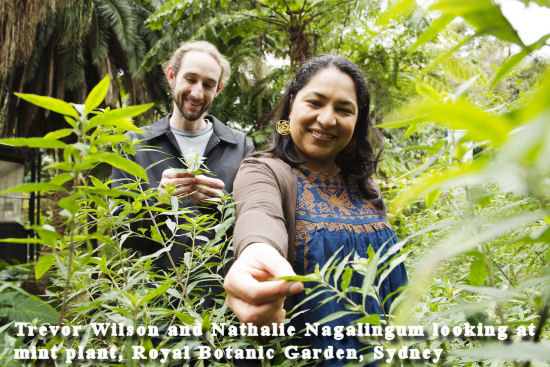

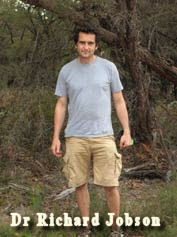

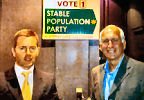 The Stable Population Party Australia is reaching out to members and sympathisers in a series of networking events across Australia. Should be interesting and fun to meet like-minded people and help to organise a coordinated electoral response to the growth lobby that has taken over our country. (Candobetter Ed.)
The Stable Population Party Australia is reaching out to members and sympathisers in a series of networking events across Australia. Should be interesting and fun to meet like-minded people and help to organise a coordinated electoral response to the growth lobby that has taken over our country. (Candobetter Ed.)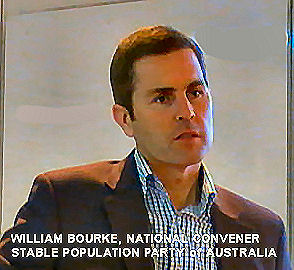
Recent comments